African fruits
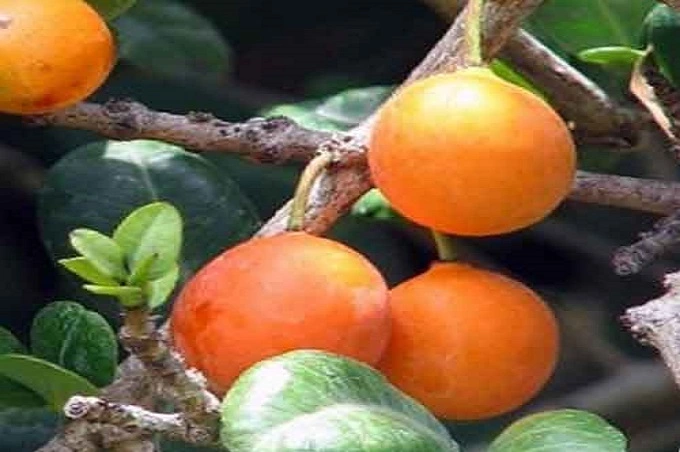
Fruits are the pride of Africa. Some plants don’t grow anywhere else in the world, but others, like watermelons loved by many people, have thrived in other parts of the world.
What fruit grows in Africa?
What kind of fruit can a tourist choose from this exotic continent for recreation? Their list is very extensive. So what fruits grow in Africa?
1. Kiwano fruit
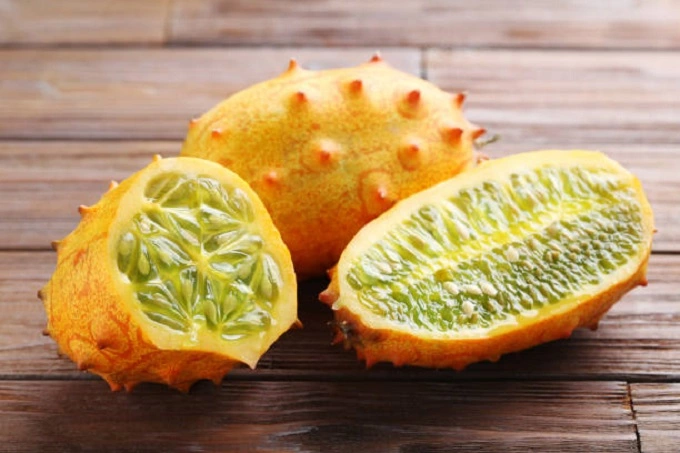
Many African fruits arouse the delight and curiosity of tourists who see them for the first time. The nod is no exception. This fruit is called horned melon or African cucumber.
Kiwano fruits are unusual. They look like orange hedgehogs the size of an orange. At the same time, there are amazing marble stains on the skin of fruits with soft thick cones. Cutting the nodule, you can see the pulp, which contains snow-white seeds “packed” in ampoules of dark emerald jelly.
The taste of an African fruit is as unusual as its appearance. It simultaneously resembles a melon and a cucumber, a banana, and a lime. Some even catch notes of avocado in it. In connection with such an extensive palette of flavors, Kiwano is used to prepare sweet and spicy dishes. It is also consumed fresh, salted, and pickled. Assorted Kiwano with various fruits and berries to make delicious jam and compote.
The African fruit is rich in alkaline mineral salts, vitamin C, and P-active substances. In this regard, it is recommended to prevent gastrointestinal diseases, as well as vascular and heart pathologies. In its homeland, Kiwano is used by local residents to heal burns and wounds. This fruit is lovely for those who are on a diet. After all, the African horned melon has virtually no calories.
2. African pear

This plant, which is also called Dacryodes edulis, belongs to the Burseraceae family. Its homeland is the equatorial territories of Africa. Here, evergreen African pear trees can be found in woodlands with moist soils. The height of this tree sometimes reaches 40 m.
The fruits have an elongated elliptical shape. In length, they grow up to 12 cm. The peel of this fruit has a purple or blue tint. That is why the African pear looks like an eggplant.
The pulp of the fruit is soft and oily. It has a dark green color. Locals consume African pear fruit raw, salt it, roast it, boil it, and enjoy it with roasted corn.
This amazing fruit contains many trace elements, amino acids, vitamins, fats, and triglycerides. The African pear is very nutritious and high in calories. Indeed, even when boiled, its pulp contains up to forty-eight percent fat.
3. Indian fig
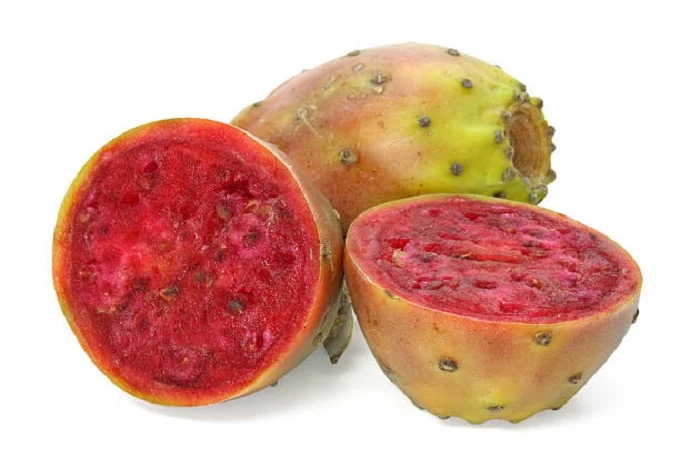
Of course, we can see fruits from Africa on the shelves of our stores. But still, we will never see many of them in our homeland.
So, Indian figs are found everywhere on the African continent. But it would help if you ignored its name. After all, these fruits of Africa (and their photos prove it) have nothing to do with the figs we are used to. These are the fruits of wild-growing cacti, called prickly pear.
Indian figs are pear-shaped. Its fruits are red, green, or yellow, reaching a length of 5 to 7.5 cm, covered with small sharp spines. Under the peel is a translucent pulp with large seeds, very sweet.
4. Aizen fruit
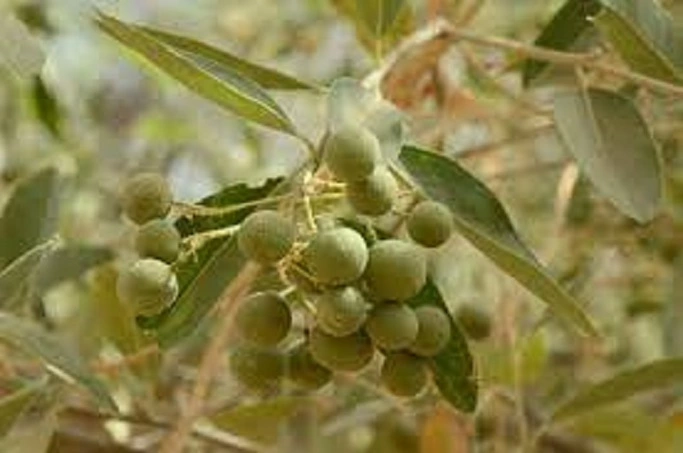
The fruits of the evergreen shrub of Boscia senegalensis in the world of African fruits. Similar to yellow cherries, they have amazing pulp. When ripe, it becomes transparent and honey-sweet, but very soon, under the hot African sun, it begins to dry out, turning into a thick vegetable caramel.
Leaving the Aizen fruit in the sun even longer – it will soon become brittle and sweet like caramel. What could be wrong with such a beautiful fruit? Toxic seeds. It is still possible to separate them from the soft pulp of the fruit to get them out of the toffee – it is more difficult, and the task is to pick them out of the vegetable candy. And yet it is so tasty that many take this risk. What is more interesting – after a certain heat treatment, the seeds become harmless. They are even specially harvested, processed, dried, and ground as a coffee substitute.
Aizen fruit is a nutrient-rich, pulpy gem that ripens on a palm tree. The maroon scales should be peeled off before eating, containing vitamins B1, B2, B5, ascorbic acid, minerals, iron, potassium, phosphorus, and calcium. The fruit is consumed as it is or can be made as juice, jam, or ice cream as well.
5. African Mango
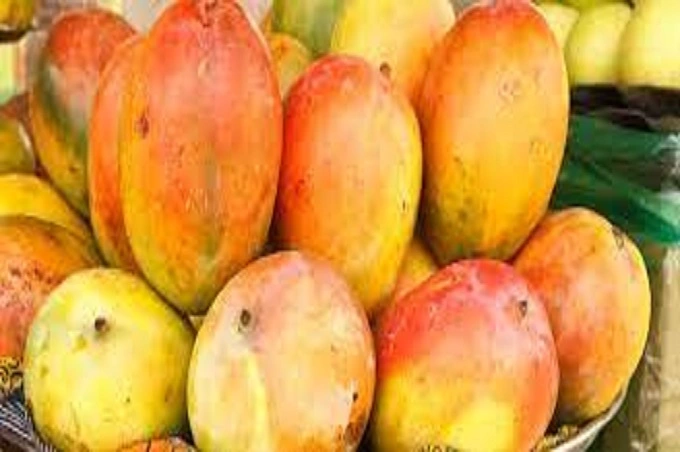
It is believed that this is the most delicious fruit in Africa. Its homeland is the western territories of the continent.
African mango fruits are egg-shaped. At the same time, their sizes range from the size of a pear to a coconut. African mango has tough green or yellow skin. Inside the fruit is a large bone.
It has yellow-orange flesh. Its piquant sweetish taste, somewhat reminiscent of our raspberries, makes this fruit one of the most wonderful fruits in the world.
Since ancient times, the local population has been using mango as a remedy. And its seeds, called Dika nuts, are used in modern cosmetology and pharmaceuticals. Mango is especially famous among those who have decided to lose extra pounds. After all, the plant substance that is found in Dika nuts is an excellent tool for losing weight.
6. Mahobohobo
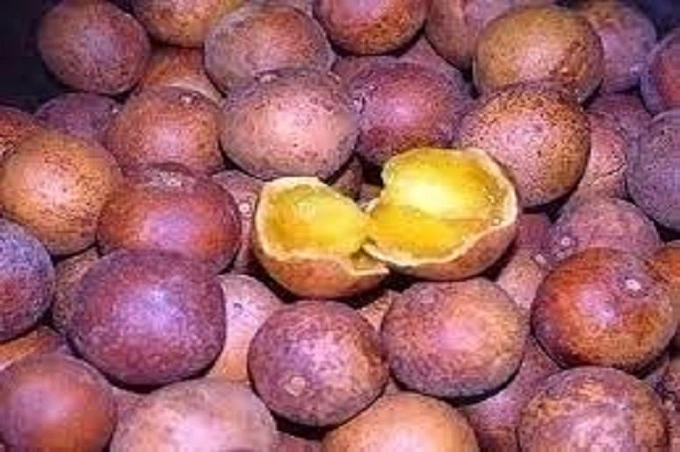
Another name for Mahobohobo fruits is sugar plum. This tree grows in abundance in the wild African nature, and its fruits are one of the most popular fruits in local markets.
It is rarely cultivated, but trees are left when land is being cleared. Still a traditional food plant in Africa, Mahobohobo really looks like yellow plums, and their flesh – fleshy, honey, sweet – tastes like both pear and plum at the same time.
Sugarplums are eaten raw, fried, put into pie fillings, and made into jam and wine. It is also very popular in dried form – such a dried fruit tastes like toffee. This little-known fruit has the potential to improve nutrition, boost food security, foster rural development and support sustainable land care.
To get the latest stories, install our app here
7. Miracle fruit
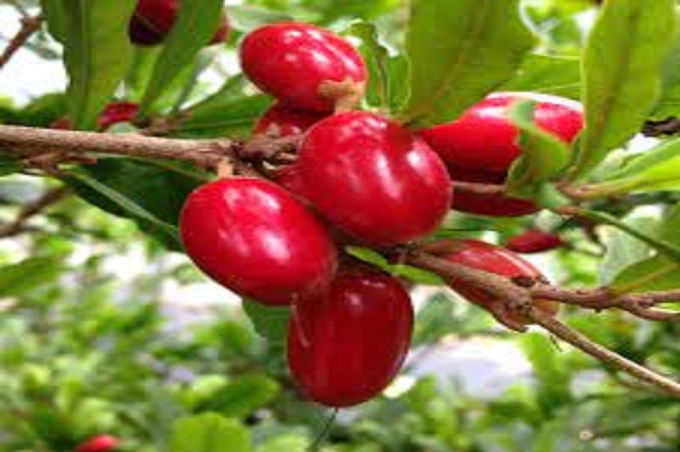
On the territory of Africa grows a small tree belonging to the Sapotaceae family. Its fruits are miracle fruits. These are bright red small berries, the length of which is only 2-3 cm. In their appearance, they resemble barberries.
The magical fruit is sweet and very palatable. But you need to eat it almost immediately after harvesting. After all, during storage, the fruits lose all their qualities.
The name of the miracle fruit is not in vain. It has truly magical properties. It contains the protein miraculin (glycoprotein), which acts on taste buds. After eating the miracle fruit, the sour taste in the mouth is replaced by a sweet one. It is noteworthy that the aromatic properties of the products remain unchanged. For example, after eating a miracle fruit, a lemon will seem sweet. At the same time, citrus will fully retain its taste and aroma. This effect lasts for two hours.
Miracle fruit is used as a natural sweetener. It is recommended for those who wish to adhere to a dietary diet but at the same time experience an irresistible craving for everything sweet. It is also recommended for patients with diabetes.
The beneficial properties of the amazing African fruit do not end there. After all, it contains many trace elements that support the normal functioning of the human body. Also, in the miracle fruit, a lot of fibre and vegetable acids improve the health of the digestive system.
8. Kigelia fruit

In the forests of tropical Africa, you can find beautiful trees with wide, dense crowns and strange fruits. This is Kigelia pinnate, belonging to the Bignoniaceae family. Another name for the plant is the sausage tree. Of course, it seems a little strange. But the fact is that the fruits of this tree have an amazing shape, reminiscent of liver sausage loaves due to their brownish-grey color. And they hang on long stalks like ropes. The picture resembles sausages suspended immediately after production. The pedicels are so strong that a person can swing on them if desired.
Kigelia fruits hang on their strings for several months, gradually increasing in size. After maturation, their peel bursts.
It is worth bearing in mind that, despite the appetizing name, African tree sausages are inedible. The local population eats only the seeds of these fruits, and even then, only after preliminary frying. Raw seeds are poisonous. The sausage tree fruits are eaten only by giraffes, monkeys, and hippos. Kigelia seeds are an excellent treat for parrots. These amazing fruits are used by people as fuel and make red dye.
9. Imbe fruit

The sonorous name Imbe in Africa is the fruit of the evergreen tree Garcinia livingstonei. The fruit is a small, bright, orange, thin-skinned berry 1–4 cm in diameter, with one single large seed; the small yield of edible fruit is pleasantly sweet yet acidic and contains a latex that some people find unpleasant.
The thin-skinned, edible orange fruit is delicious, but the thickness of the skin hinders the commercial cultivation of the tasty fruit—they can’t stand long hauls, so you can only buy Imbe in African markets.
The juicy, sour-sweet pulp of Garcinia fruits tastes like apricots. They eat it raw, make desserts from the fruit, ferment the juice and produce a light intoxicating drink.
Both a male and female plant is needed in order to obtain fruit, although both sexes can be grafted onto the same plant to achieve the same effect.
10. Marula fruit
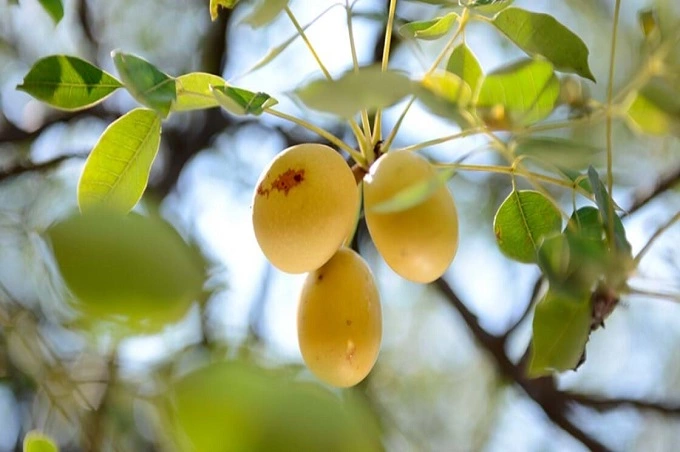
This fruit is also native to Africa. It grows on trees of the same name, found in many tropical countries. The marula plant belongs to the pistachio family. In March, small fruits appear on its branches, outwardly similar to plums. They have thick skins and very sweet flesh. Inside the fruit is a large hard bone.
Marula is rich in vitamin C. In addition to vitamin C, marula contains all the minerals and nutrients involved in developing and building the cellular structure of the body. This makes it very beneficial for the human body. Moreover, a valuable vitamin is not only in the fruit’s pulp. A lot of it and in the bone.
The peoples of Africa use the fruit for culinary purposes. Moreover, not only the fruits but also the plant’s leaves are used for food. This tree is a wonderful source of food for people and animals. So, the local population extracts oil from the core of the bones, which contains a lot of proteins. And in the peel and the pulp, natural antioxidants and oleic acid are present in large quantities. That is why marula is one of the essential ingredients of many African dishes. So, from the peel of the fruit, drinks are obtained that resemble coffee and tea in their taste. Marula fruits are very high in sugar.
11. Watermelon fruit
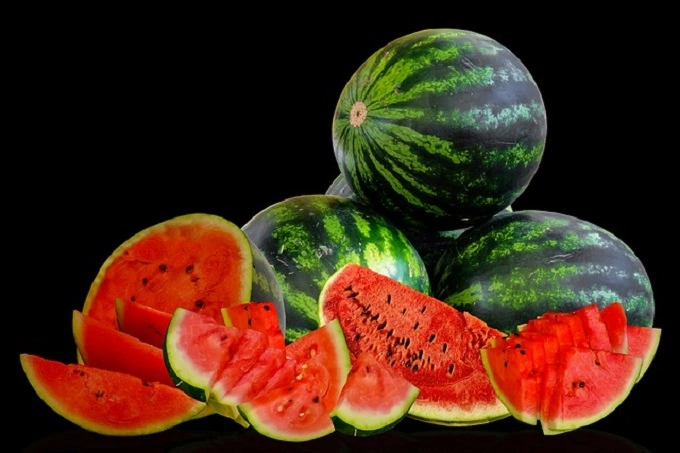
From the point of view of botany, it is worth admitting that watermelon is a false berry or a pumpkin. But it will forever remain one of the most popular and largest fruits in the everyday sense. The first watermelons appeared in southern Africa almost five thousand years ago. They then spread north, and by 2000 AD, they were an everyday food in ancient Egypt. Even in the Bible, you can find lines about watermelons, as about the food of the ancient Israelites languishing in Egyptian slavery.
Watermelon is a sweet and refreshing low-calorie summer snack. It provides hydration and also essential nutrients, including vitamins, minerals, and antioxidants.
The seeds have a nutty flavor and can be dried and roasted, or ground into flour. Watermelon rinds may be eaten, but their unappealing flavor may be overcome by pickling, sometimes eaten as a vegetable, stir-fried or stewed.
12. Ackee fruit
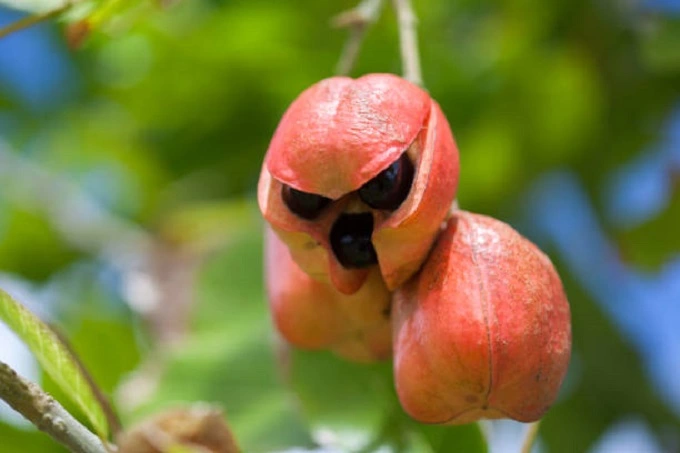
This plant is from the Sapindaceae family and is native to West Africa. Its unripe fruits are poisonous to humans. That is why in some countries ackee is forbidden fruit. However, only those fruits that have undergone improper heat treatment or have not opened on their own are poisonous.
The ackee fruit is pear-shaped. Its skin is bright orange-red. In length, these fruits grow up to 9 cm. After ripening, the fruits open on their own. At the same time, they expose the juicy white pulp under the skin, which contains large black seeds. Ackee tastes like a walnut. It is worth remembering that you only need to eat the pulp of this fruit. In order to avoid poisoning, it should only be boiled by lowering it into boiling water for at least 10 minutes.
The ackee fruit is popular in Jamaican cuisine. Here they make a side dish out of it. To do this, the pulp is pre-boiled and then fried in oil. The resulting dish, in its taste, resembles the familiar omelet.
The peoples of West Africa make preparations from it that can save a person from many diseases.




